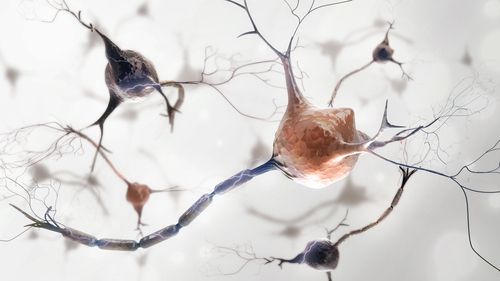Small RNA Molecule miR-29a May Have Therapeutic Role in CMT1A, Study Says
Written by |

A small RNA molecule called miR-29a can prevent Schwann cells from producing abnormal PMP22 transcripts associated with Charcot-Marie-Tooth disease type 1A (CMT1A), a study has found.
The study, “Downregulation of the human peripheral myelin protein 22 gene by miR-29a in cellular models of Charcot–Marie–Tooth disease,” was published in Gene Therapy.
CMT1A is normally associated with genetic mutations that cause a duplication in the DNA sequence of the PMP22 gene. PMP22 provides instructions to make a protein called peripheral myelin protein 22 (PMP22), a component of myelin, the fatty substance that insulates nerve fibers and is essential for the transmission of electrical signals between neurons.
“Overproduction of PMP22, such as in nerves of CMT1A patients, leads to demyelination and accumulation of misfolded PMP22. Severity of CMT1A is dependent on PMP22 copy number, as patients with four rather than three copies have a more severe neuropathy,” the researchers wrote.
So, molecules that can be used to prevent the production of abnormal PMP22 transcripts, including microRNAs (miRNAs), may be relevant therapeutic targets for CMT1A. Of note, transcripts are RNA molecules that are used as a template for the production of proteins; miRNAs are tiny RNA molecules that control the expression of several genes (protein production).
For this study, researchers from the University of Florida College of Medicine set out to explore the therapeutic potential of miR-29a, which the team previously had shown was able to block the production of abnormal PMP22 transcripts in mice Schwann cells.
First, investigators used bioinformatics to determine whether miR-29a was able to interact with the DNA sequence of the human PMP22 gene and control its activity. Analyses showed that miR-29a was able to interact with a conserved regulatory region within the human PMP22 gene sequence that is normally duplicated in patients with CMT1A.
They found that when they forced human embryonic kidney cells (HEK293) that had been genetically modified to produce a modified version of PMP22 coupled to luciferase (a light-emitting enzyme from fireflies) to express a molecule similar to miR-29a, the amount of fluorescence emitted by these cells decreased. That indicated a reduction in the expression levels of PMP22.
Likewise, when they forced Schwann cells from diseased mice to express miR-29a, they discovered the miRNA was able not only to prevent cells from producing the normal mouse PMP22 gene transcripts, but also human PMP22 transcripts that investigators had artificially inserted in the cells.
Moreover, when they forced skin fibroblasts (connective tissue cells) that had been isolated from patients with neuropathy (nerve disease) to express miR-29a, they found the levels of PMP22 transcripts dropped by 50%, which corresponded to a reduction of 20% in the levels of the PMP22 protein.
Finally, investigators found that by reducing the production of abnormal PMP22 transcripts in patients’ fibroblasts, miR-29a also restored the cells’ capacity to divide and proliferate, which is normally impaired in patients with CMT1A.
“The current study provides compelling evidence for the utility of miR-29a as a therapeutic approach for CMT1A, however, given the multiple gene targets of miR-29a, a suitable delivery vehicle must be identified prior to in vivo application,” the researchers wrote.
“[W]ith the development of a [Schwann cell-specific delivery system], it is conceivable that miR-29a will be an effective gene therapy agent for preventing and reversing nerve pathology [disease] due to PMP22 overproduction,” they added.




